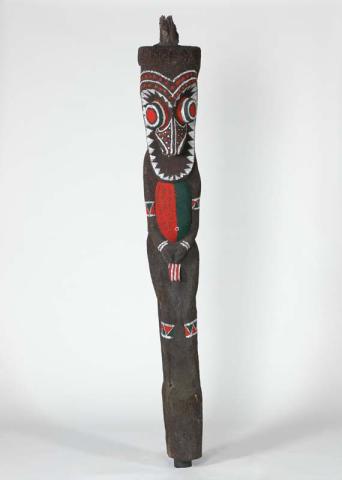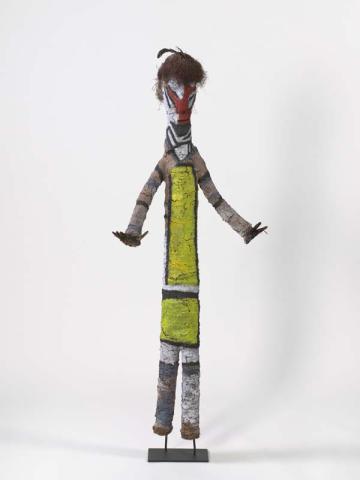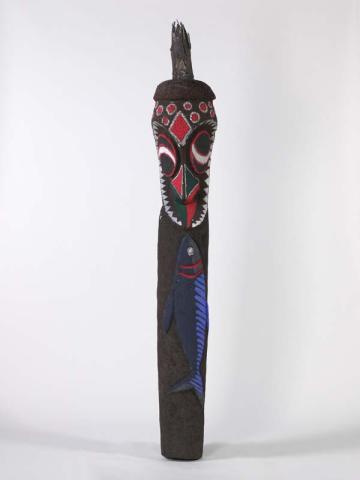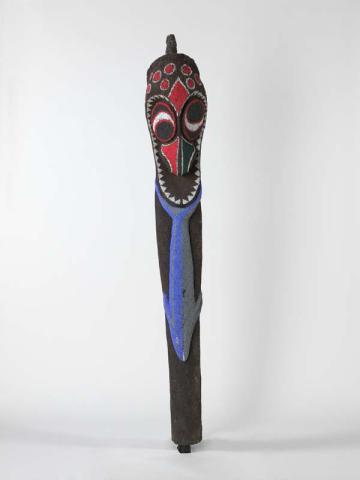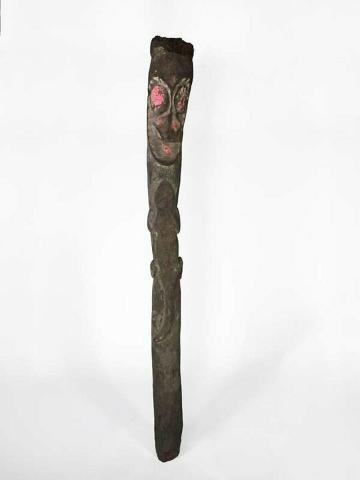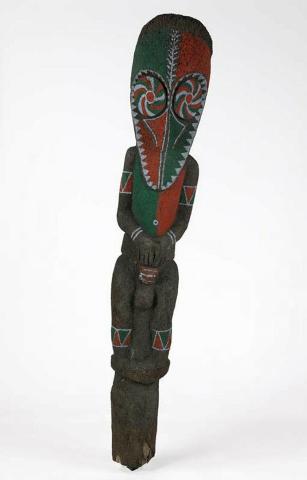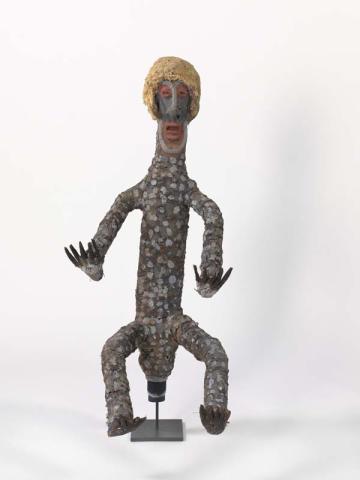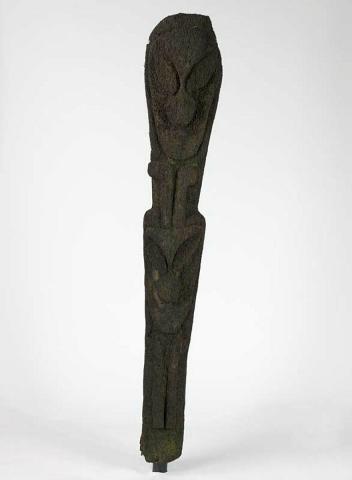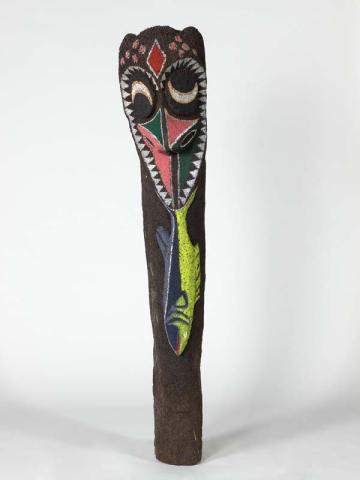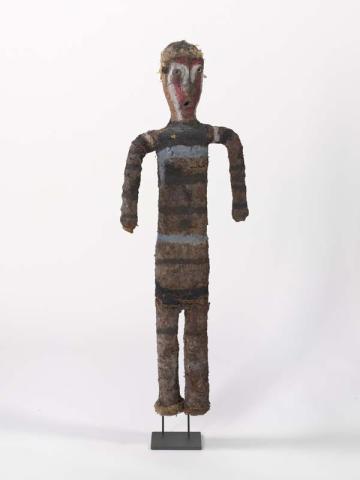Vanuatu sculptures (multiple works)
Ceremony is at the heart of male public life in North Ambrym and the source of a distinctive sculptural style most often represented by the monumental atingting (slit-drum). These towering instruments, used as a national icon on stamps and public institutions, are however just one of the many forms of artistic expression pursued as part of the contemporary practice of kastom (customary government, law and religion) on the island of Ambrym. Other forms include the metres high mague (ranking black palm) figures, the intensely powerful Temar ne ari (ancestor figures) and the Guardian for tabou house. The Queensland Art Gallery recently acquired examples of each of these distinctive sculptural forms for its Collection, including a number of works gifted by David Baker.
A mountainous, volcanic island, periodically devastated by eruptions, Ambrym lies in the north-central region of the Vanuatu archipelago. As a result of volcanic activity, large numbers of West Ambrymese have periodically relocated to the neighbouring islands of Malakula, south Pentecost and Epi, developing cultural ties which subsequent generations repatriated to Ambrym. This cultural exchange resulted in the transference to Ambrym of Malakulan mague rites: a hierarchical system of male initiation and authority ceremonies.
Freddy Bule’s practice is directly linked to the contemporary execution of mague and other Ambrymese ceremonies. The right to perform these ceremonies and create the figures used within them is at time passed down from father to son, and at other times is purchased with pigs and other valuables. As well as holding the necessary rank and copyright to create different designs, artists commissioned to create objects used within mague ceremonies must demonstrate technical skill and a distinctive handling of form.
Freddy Bule’s visually arresting Atingting sculptures display his interpretation of characteristically Ambrymese stylistic traits including elongated face, large, disc-shaped eyes and prominent nose. Each drum is carved in the form of a stylised ancestor with individualised design features relating to his rank and the designs Bule has copyright permission to create. Spiral motifs depicting sacred pig’s tusks have been carved below the face on both instruments and a double row of toothing representing hair surrounds the face. When played, the ancestor’s voice emerges through the slit incised on each drum, transforming the object into an instrument capable of quite powerful and emotionally charged experiences. The brightly coloured abstract patterning often associated with particular spiritual energies assists this transformation by giving the figure with a second, visually animated skin.
In the case of the Guardian of the tabou house figures a mesmerising use of bodily pattern and colour is intended to confront, startle and even terrify. These figures are typically situated inside the tabou house. Entry to this house and surrounding dancing grounds is prohibited to women. Under these circumstances, the hypnotic energy resonating from the guardians patterned bodies and eyes express the power of the chief and clan for whom it was made.
The Mague (ranking black palm) figures are carved from black palms and then painted, originally with locally derived ochres and now acrylic paint. Cultural geographer Joel Bonnemaison has pointed out the importance of trees as a metaphor for man, describing Melanesian people thus:
'They are the trees, those trees with deep roots piercing downwards, towards the magical bed of the world. The truth, the beliefs of these people are fastened there, not in the infinite expanse of the sky, but in the dizzying depths of place and in communion with the entrails of the earth, a belly in which they are its blood.' (1)
The human–tree form of ranking black palm figures, the Atingting and Guardian of the tabou house all reference this link to place and its importance as the body of the ancestral world.
Powerful, bold and expressive of a rich artistic tradition, these works reflect the protocols guiding the male ni-Vanuatu kastom of North Ambrym. Although created using customary practice, these works also demonstrate the dynamic nature of Ambrymese culture as it responds to contemporary issues and influences.
Ruth McDougall, Artlines 4-2009, p.35.
Endnotes
1 Joel Bonnemaison, 'The metaphor of the tree and the canoe', in Joel Bonnemaison et. al. (eds.), Arts of Vanuatu, Crawford House Publishing, Bathurst, 1996, p.35.
(Works from Ambrym Island acquired by the Gallery in 2008–09 include two atinging (slit drums): 2008.364 and 2008.365; eight mague figures: 2008.323, 2008.324, 2008.325, 2008.326, 2008.360, 2008.361, 2008.362 and 2008.363; five Temar ne ari (ancestor spirit figures): 2008.327, 2008.328, 2008.329, 2008.330 and 2008.331; and five Guardian of the tabou house figures: 2009.206, 2009.207, 2009.208, 2009.209 and 2009.210.)
Connected objects

Atingting (slit drum) 2005
- BULE, Freddy - Creator

Atingting rom (slit drum) 2005
- BULE, Freddy - Creator
Metadata, copyright and sharing information
About this story
- Subject
